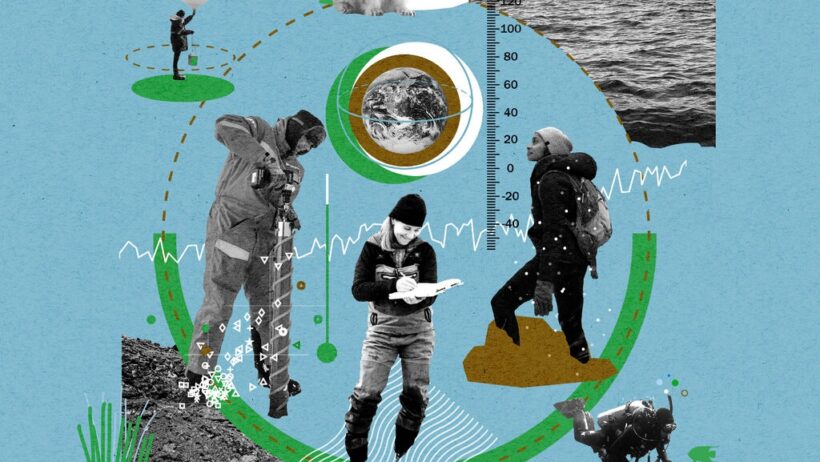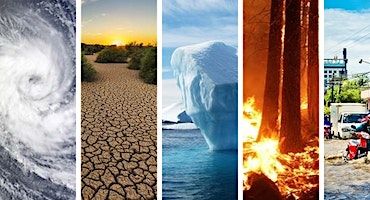Kashmir, often referred to as “Paradise on Earth,” is a region of breathtaking mountainous landscapes, verdant valleys, and shimmering lakes. However, beneath this picturesque veneer lies a burgeoning climate crisis that threatens both its ecological integrity and the livelihoods of its inhabitants. As global warming tightens its grip on geographic territories worldwide, Kashmir bears witness to its multifaceted impacts, reshaping the very essence of its natural environment.
The Himalayan range, often called the “Third Pole,” harbors the largest expanse of ice outside the polar regions, serving as a vital lifeline for millions across South Asia. Glaciers in this region not only contribute to the water supply for agriculture and drinking but also regulate local climate patterns. Yet, as temperatures rise, these majestic glaciers are rapidly retreating. The consequences of this glacial retreat resemble a cascading torrent—initially, an increase in water flow during summer months, followed by a perilous drought as water resources dwindle. This phenomenon transforms the once-bountiful rivers into mere trickles, threatening the agrarian foundations upon which local communities depend.
Ominously, the changing climate also exacerbates the region’s susceptibility to natural disasters. The reality of increased glacial melt raises the specter of glacial lake outburst floods (GLOFs), a phenomenon that can unleash catastrophic torrents on unsuspecting settlements nestled in the valleys below. The 2010 Lahaul-Spiti incident serves as a stark reminder of this peril, which closely aligns with current forecasts projecting increased frequency and intensity of such events. Natural disasters, in essence, have transformed into unwelcome harbingers of climate chaos, reshaping lives and ecosystems in their wake.
Beyond hydrological challenges, changing climate patterns have engendered a shift in biodiversity. The once-clear delineations of ecological zones blur as temperature gradients rise. Species that once thrived in temperate niches now find themselves displaced or facing extinction. The rare Hangul deer, an emblem of Kashmiri wildlife, faces dire prospects as its habitat shrinks due to increasing temperatures. This interspersing of ecological loss signifies not just a threat to individual species but a potential unraveling of entire ecosystems. The web of life, delicately woven over millennia, hangs by a thread.
Kashmir’s agricultural landscape is also under siege from climate change. Traditional farming practices, which have sustained local communities for generations, are being upended. Erratic rainfall patterns and prolonged dry spells disrupt the agricultural calendar, leading to diminished crop yields. Farmers, once attuned to the rhythms of nature, now find themselves grappling with uncertainty and despair. The rise of pests and diseases, fostered by warmer temperatures, further compounds these challenges, effectively eroding food security. In a region where agriculture is not merely an economic activity but a way of life, these transformations are deeply unsettling.
The socio-economic fabric of Kashmir is intricately tied to its natural resources. As glacial meltwater diminishes, conflicts over water access may arise, pitting communities against one another. Historically, such disputes have been catalysts for tension in the region. The competition for dwindling resources could inflame existing geopolitical strife, presenting a multifaceted challenge that extends beyond mere environmental concerns.
In an attempt to mitigate these dire consequences, local and global stakeholders are exploring adaptive strategies. Initiatives aimed at water conservation, sustainable agricultural practices, and the promotion of climate-resilient crops are emerging as keystones in the fight against climate change. By harnessing traditional ecological knowledge alongside innovative approaches, communities can navigate the complexities of a warming climate, preserving their heritage while fostering resilience. Education and awareness programs can empower local populations to adapt to changing conditions, emphasizing the need for a symbiotic relationship with the environment rather than one of exploitation.
Moreover, international cooperation plays an indispensable role in bolstering Kashmir’s resilience against climate change. Collaborative efforts among governments, NGOs, and researchers can facilitate the exchange of knowledge, best practices, and resources. Through global partnerships, the collective burden of climate change can be addressed, fostering a spirit of solidarity and shared responsibility. It is imperative that a dialogue is established, one that transcends borders and recognizes that the climate crisis is a shared challenge demanding unified action.
As Kashmir stands at a crossroads, the narrative surrounding its climate crisis unfolds like a poignant tale of survival. The region’s unparalleled beauty is intrinsically linked to the delicate balance of its ecosystems. Preserving this balance is crucial, not only for the local populace but for the generations yet to come. Each snow-capped peak, each lush valley, speaks of a legacy threatened by global warming. The metaphorical winds of change call for a concerted response, urging society to reimagine its relationship with nature, guided by reverence and responsibility.
In conclusion, the climate crisis in Kashmir is a vivid illustration of the broader ramifications of global warming. As temperatures soar, both the region’s natural splendor and the livelihoods intertwined with it are at stake. Navigating this crisis demands a multifaceted approach, weaving together local adaptation strategies with global commitment. Every effort, no matter how small, contributes to the broader fabric of resilience that can withstand the tempests of climate change.







